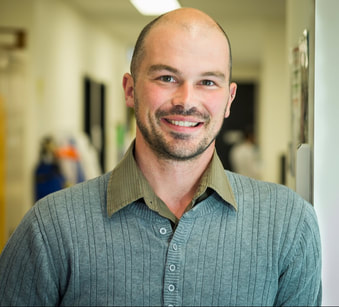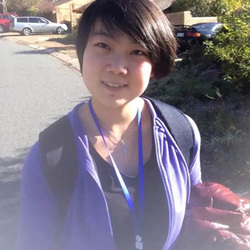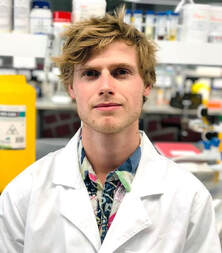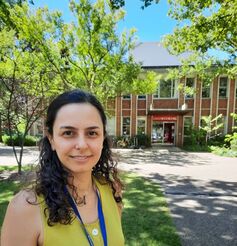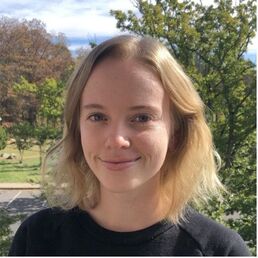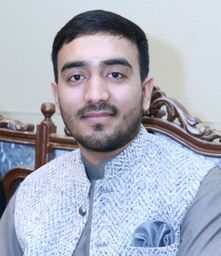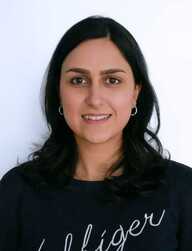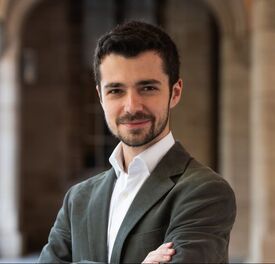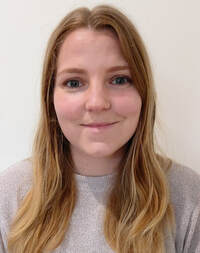Professor David Nisbet
|
David Nisbet is a Professor who is jointly appointed between the Faculty of Engineering and IT and the Faculty of Medicine, Dentistry and Health Sciences at the University of Melbourne. He is the Director of the Graeme Clark Institute and the head of the Laboratory of Advanced Biomaterials. Dave joined the University of Melbourne after completing his PhD at Monash University and postdoctoral Fulbright scholarship at the University of California, Berkeley. He then spent over 10 years at the Australian National University, most recently as a jointly appointed professor between the Research School of Chemistry and the John Curtin School of Medical Research.
Dave is passionate about developing novel biomaterials, and particularly about seeing the biomaterials developed for clinical applications. His research groups consist of team of engineers, chemists, and biologists, all working together to create novel materials to help combat injury and disease. |
Current Postdoctoral Fellows
Dr Yi WangYi is investigating the use of self-assembling peptides for viral vector gene delivery. Our recent work has shown that by altering the electrostatic interactions of these materials, they can operate successfully as gene delivery vehicles. Yi is investigating this process in 3D cell cultures and is considering the controlled delivery of genetic material for the treatment of disease.
|
Dr Samuel CheesemanSam’s research focuses on the use of gallium-based liquid metals for biological applications. In particular, he has expertise in designing and characterizing nanomaterials and surface coatings for antimicrobial, antifouling and superhydrophobic applications.
|
Dr Elmira Mohamed |
Dr Lilith Caballero Aguilar |
|
Elmira is currently working on the development of nanoscale haemostatic materials utilizing a green method to produce biomass-based nanomaterials. This new class of haemostatic nanomaterials can be applied in wide-ranging medical and veterinary situations including surgical settings, sporting/combat fields, and household/vehicle first-aid kits.
|
Lilith Caballero is a biomedical engineer with expertise in biomaterials, polymers, pharmacology, and medical devices. She holds a BSc in Physics Engineering from Yucatan University in Mexico, a MSc in Biomedical Engineering from KU Leuven in Belgium, and a PhD in Biomedical Engineering from Swinburne University, Australia. Lilith’s field of research lies at the intersection between drug delivery and biomaterials. Lilith has developed biodegradable materials able to release several bioactive molecules such as growth factors and chemotherapeutics. Lilith is currently working as a Research Fellow at Melbourne University, at the Advanced Biomaterials Laboratory led by Prof. D. Nisbet, where she focuses on engineering biomaterials for cartilage and brain injury repair.
|
Current PhD Students
Stephanie FranksSteph’s research focuses on the use of self-assembling peptide biomaterials as local drug delivery vehicles to improve the treatment of solid tumours, with a focus on glioblastoma. By localising therapeutic agents and prolonging their release at the target site, the efficacy of these drugs is increased, improving their ability to effectively treat cancer cells or attenuate the tumour microenvironment.
|
Shiva Soltani DehnaviShiva's project is focussed on the "Potential Treatment of Huntington's Disease (HD) with Nanoscaffolds and Gene Therapy", where she is combining engineered nanoscaffolds with gene delivery systems. She is developing advanced viral vector vehicles in order to deliver genes encoding neurotrophic factors (NTFs), as a promising treatment option for both neurodegenerative diseases and HD.
|
Monalisha Ghosh Dastidar
Monalisha's research is focused on nanoengineering material surfaces for electrochemical detection of clinically relevant biomarkers. She is a part of the ANU Grand Challenge project: Our Health in Our Hand and working on early-stage detection of ailments such as Diabetes and Age-Related Macular Degeneration. She is also working towards fabricating surfaces for multiplexed detection of biomarkers.
|
Zain Ul AbideenZain’s research is focused on the development of nano-medical devices for early and continuous monitoring of diseases through breath analysis. He is developing electronic noses (sensor arrays) based on novel materials to increase the selectivity of the sensors. He is also part of the NATO AMOXES project, in which he is preparing an innovative electro-optical chemical nano-sensor for modern distributed sensing platforms. The idea is to combine two different transduction principles on a single sensing device.
|
Alishba John
Alishba’s research focuses on improving the selectivity of chemiresistive gas sensors for early detection of diseases through breath analysis. As part of the Grand Challenge: Our Health in Our Hands (OHIOH): Future Personalised Medical Technologies for a Sustainable and Effective Healthcare, she is working on synthesis of different morphologies of metal organic framework for enhanced gas sensing performance.
|
Negar Mahmoudi
Negar is employing peptide inspired hydrogel nanoscaffolds that can be injected into a brain lesion as a single injection to provide chemical and physical support for the surrounding cells. She is ultilising various modifications to these materials to reprogram inflammatory cells directly into neurons, whilst also promoting the survival, maintenance and growth of existing neurons to encourage repair.
|
Bram ServaisAs an enthusiastic biosystems engineer from Belgium, Bram is passionate about exploring the cutting-edge field of microfluidics and 3D printing techniques in the context of neuroscience research. Bram is excited about collaborating with other researchers and experts in the field to further advance our understanding of the blood-brain barrier and its crucial role in neurological function.
|
Andrew QuattrocchiAndrew’s research broadly focusses on using human induced pluripotent stem cells in neural regeneration and disease modelling. Andrew’s project will explore novel ways to regenerate, restore and model the blood brain barrier (BBB) in health and disease. The BBB is the semi-permeable border that protects the brain and is composed of a variety of immune and vascular cells, taken together this BBB interfaces with the neurons of the brain forming what is known as the neurovascular unit. Andrew will employ novel biomaterials to aid and support this work, producing highly dynamic and biomimetic vascular environments.
Elizabeth ZoneffElizabeth began her PhD with the goal of creating biomimetic materials that could support stem cells used for the treatment of brain injury and neurodegenerative disease. Her research focuses on the development of oxygen-releasing self-assembling peptide hydrogels that can maintain oxygen homeostasis before vascularisation of the implanted cell-graft occurs.
|
To see previous PhD students, click here.
Undergraduate Students
|
|
